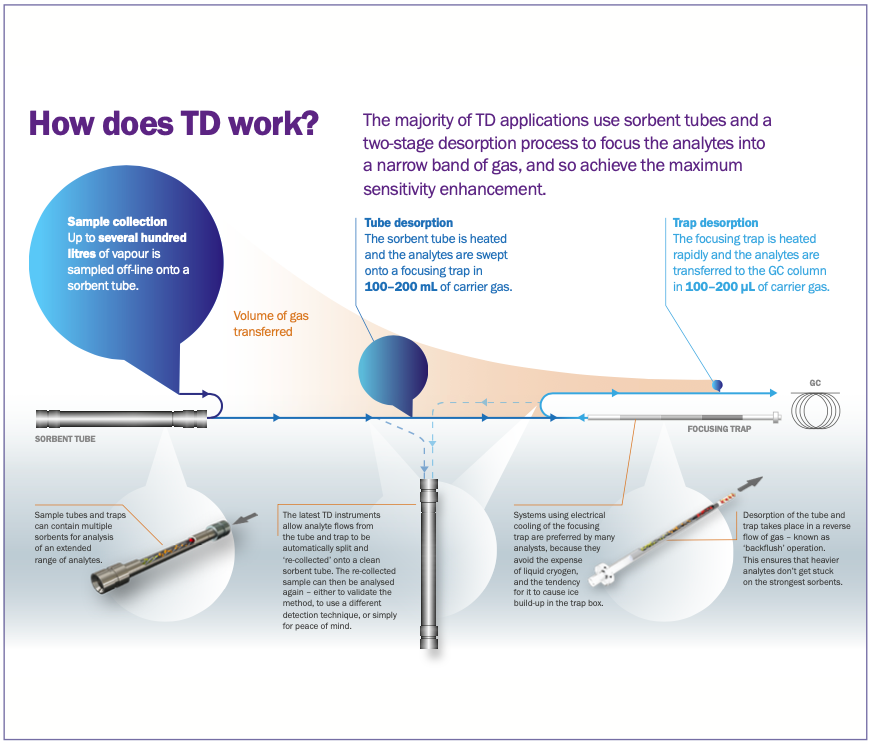Five Frequently Asked Questions about Thermal Desorption
Thermal desorption (TD) is a versatile preconcentration technique for gas chromatography (GC) that is used to analyze volatile and semi-volatile organic compounds in air, materials or liquids. It arose out of the need to improve upon conventional sample preparation techniques for GC. Thermal desorption can be used for a wide range of applications such as environmental monitoring, materials testing, and food and beverage analysis.

I’m not working with air samples, so why would I need thermal desorption?
Thermal desorption is most widely known as a preconcentration technique for ambient air, but the simplicity and automation of the technique has led to its widespread use for a wide range of other matrices that are not amenable to direct GC analysis. This versatility is illustrated by its use for direct desorption (dynamic headspace) of solids and liquids and the field sampling of soil, water and breath using dedicated accessories.
Can I analyze target and non-target compounds?
Yes. The majority of sorbents are not compound-selective and can capture analytes over a broad range. They work by adsorbing suites of compounds based primarily on their boiling point and physical properties. The use of multiple sorbents increases the volatility range that can be analyzed in a single sample.
Is TD suitable for semi-volatile organic compounds (SVOCs)?
Yes. Markes’ TD-specific heated valve provides an inert, low-volume, consistently heated flow path, ensuring fast, efficient transfer of high-boiling compounds up to C44, including PAHs, PCBs, and phthalates. Other thermal desorbers, without an optimized valve, can suffer from cold spots. This results in loss of high-boiling compounds, and such instruments therefore require much higher temperatures to analyze SVOCs.
I have volatile analytes and very humid samples. Can I still use TD tubes?
Yes. By optimizing sorbent selection, temperature, purging, and split ratios it’s possible to quantitatively retain very volatile compounds such as chloromethane and propylene (US EPA Method TO-17), and reduce water sufficiently for GC or GC–MS analysis.
Is thermal desorption a “one-shot” technique?
No. This is a common misconception. Markes’ instruments allow samples to be split during the tube desorption and/or trap desorption stages. The split portions can there be "re-collected" onto a sorbent tube to achieve reliable repeat analysis of a single sample multiple times. Re-collection can also be used to simplify method validation, enable confirmatory identification using a different detector, and even extend the storage stability of many sample types. In addition, re-collection can be used to extend the dynamic range of a method by automatically analyzing a sample at two different split ratios ("Hi/Lo" analysis).
